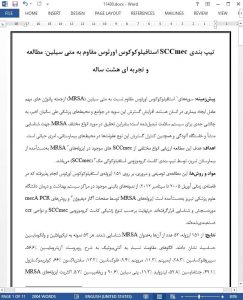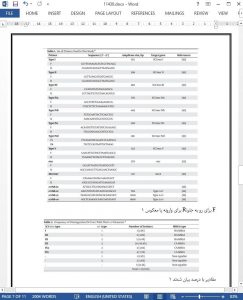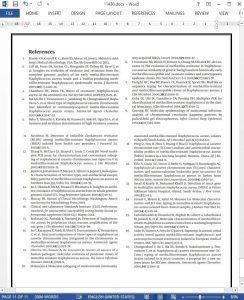Background: Methicillin resistant Staphylococcus aureus strains (MRSA) are important pathogens that cause serious diseases in humans. Throughout the recent years, the spread of these strains has increased in medical environments and society, and has become a serious challenge in health systems. Therefore, it is vital to investigate the various MRSA types to identify the origins of the infections and to control the spread of these infections in hospitals.
Objectives: The current study aimed to evaluate the different SCCmec types in MRSA isolates from hospitals of Tabriz, by staphylococcal cassette chromosome mec (SCCmec) typing.
Materials and Methods: The present descriptive and retrospective study was performed on 151 selected S. aureus isolates obtained from clinical specimens who were referred to Tabriz university of medical sciences educational-health care centers from April 2005 to September 2012. MRSA isolates were identified by agar disk diffusion and mecA PCR assays. Ultimately, they were typified according to the genetic diversity of the chromosome cassette of SCCmec and ccr regions.
Results: Of the 151 isolates, 53 were recognized as MRSA. All of these 53 samples were sensitive to teicoplanin and vancomycin. Antibiotic resistance patterns were as follows: azithromycin 56.6%, ciprofloxacin 28.3%, imipenem 11.3%, meropenem 9.4%, ofloxacin 13.2%, ceftriaxone 66%, cotrimoxazole 49.1%, gentamicin 52.8%, linezolid 11.3%, penicillin 90.6%, and rifampicin 5.7%. The majority of MRSA isolates belonged to SCCmec III (69.8%) followed by SCCmec IVc (7.5%), SCCmec IVa (3.8%), and SCCmec I (1.9%). Other types of SCCmec were not observed in the present study. Moreover, from the 53 MRSA samples, 9 were recognized as non-typable. However, staphylococcal cassette chromosome recombinase (ccr ) genetic complex analysis revealed that among the 53 studied samples, 4 isolates had ccr type 1 pattern, and 11 and 32 isolates had ccr type 2 and ccr type 3 pattern, respectively. Furthermore, 6 isolates were considered as non-typable with ccr -typing.
Conclusions: As about 70% of methicillin-resistant isolates belonged to SCCmec III, the present study can conclude that, over an 8-year period, only one dominant and stable clone of MRSA strain was found in Tabriz hospitals. This finding could be a result of incorrect medical orientations, inadequate infection controlling policies, and insufficient preventive approaches.
5. Discussion
SCCmec is the most important factor defining the origin and source of MRSA infections in society. If we could determine HA-MRSA or CA-MRSA, then we could manage MRSA infections and select the best treatment protocol (1). Each type of SCCmec has unique genetic elements. Eight types of SCCmec and 3 types of ccr genes were investigated in this research (12-19). We were recognized 4 types of SCCmec and among them, type III was the most prevalent in our isolates.











